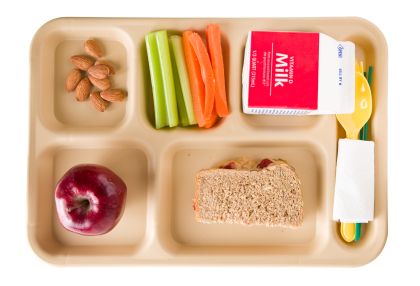
Guidelines require more vegetables, less fat.
First Lady Michelle Obama and Agriculture Secretary Tom Vilsack announced last week new standards for school lunches as part of a national effort to fight childhood obesity. The standards constitute the first major update to school lunch guidelines issued by the U.S. Department of Agriculture (USDA) in fifteen years.
Under the new standards, public schools will be expected to increase the amount and variety of produce offered in the meals they serve while decreasing the amounts of trans fats, saturated fats, and sodium. More whole grains are to be offered and only low fat or fat-free milk should be provided. In addition, meals will need to have calorie counts that correspond to the age groups to which they are served.
Although some child health advocates have expressed frustration that the new standards do not go far enough to mandate healthier foods, appropriations legislation passed last November placed constraints on what USDA could require in its standards, such as by ensuring that tomato paste on pizza could continue to qualify as a serving of vegetables. Many have nevertheless praised the Department’s final guidelines.
The standards will take effect on July 1, although most requirements will be phased in over the next three years. The program is estimated to cost $3.2 billion over five years. To subsidize these costs, the USDA will increase the school lunch reimbursement by 6 cents per meal to schools that comply with the requirements.
The new standards are part of a larger effort under the 2010 Healthy Hunger-Free Kids Act and First Lady Obama’s Let’s Move campaign to improve children’s health through diet and exercise.



